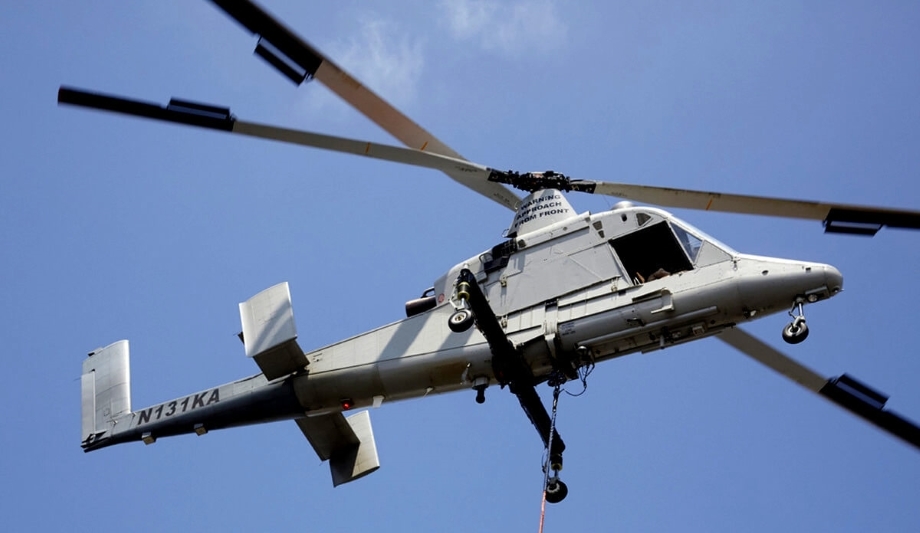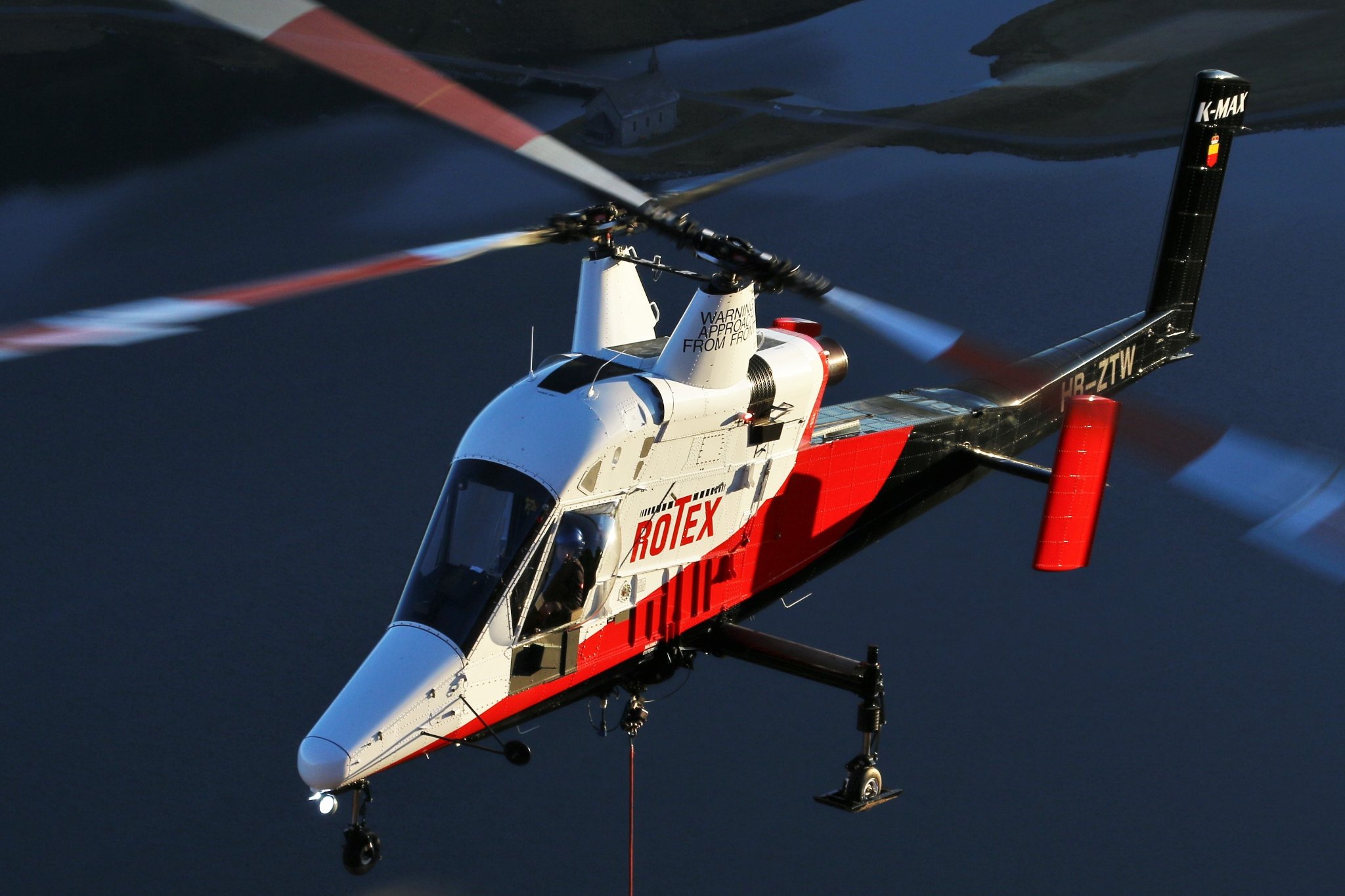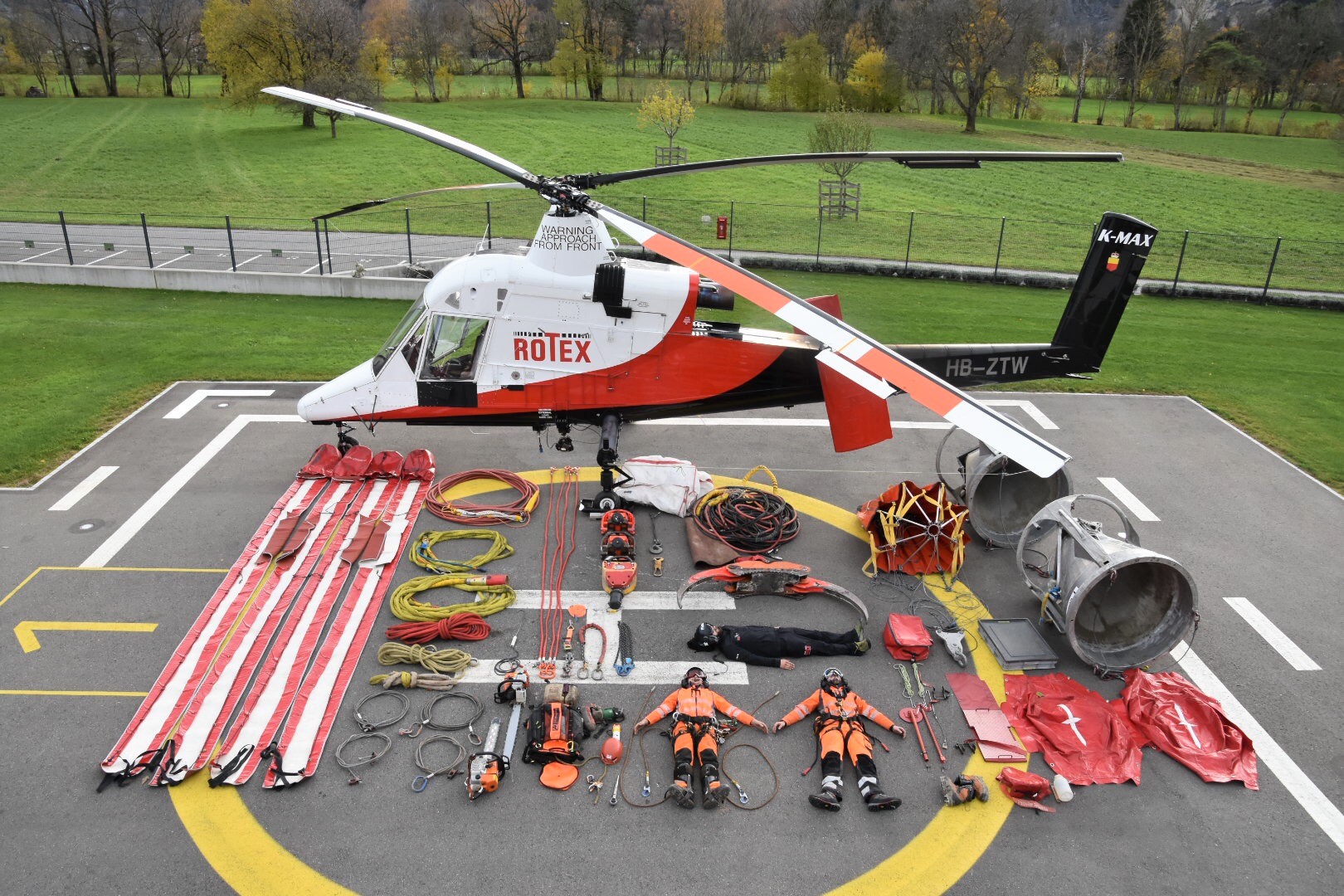
Kaman announced that it is ending production of its K-Max synchromesh rotor utility helicopter after a production run of 60 helicopters over the course of 30 years. The company said the move is part of its strategy to eliminate “non-value-added activities” and improve financial performance.

“Given low demand and variation in annual deliveries, coupled with low profitability and large working capital inventory requirements, K-Max does not deliver the most compelling growth opportunity for Kaman going forward,” the company said. “As such, Kaman will discontinue K-Max and K-Max Titan production this year. Kaman will continue to support the existing K-Max fleet in operation, including providing operators with repair, spare parts, and fleet services as well as training.”
The K-Max found a niche market with logging, external load, and aerial firefighting operators. It is unique in that it could deliver an external load of up to 6,000 pounds at sea level, more than the helicopter’s empty weight of 5,145 pounds. The helicopter also was proven on the battlefield by the U.S. Marine Corps between 2011 and 2014 in Afghanistan, when two unmanned models were used for supply delivery missions.

In 2020, the company said it intended to deliver unmanned technology kits for existing K-Max owners and buyers of new-build helicopters beginning in 2021. Helicopters so equipped were branded the K-Max Titan. The first Titan flew in September 2021. More recently, the company said it was working with Near Earth Autonomy and the Naval Air Systems Command to develop an intelligent autonomy system for the helicopter.

Kaman initially produced 38 of the helicopters between 1991 and 2003, when it halted production due to anemic demand. It resumed production in 2016 after a resurgence in market interest that ultimately was not sustained. The company said it would take $54 million of non-cash charges related to the write-down of existing aircraft, contract costs, excess spare parts, and equipment inventories.





